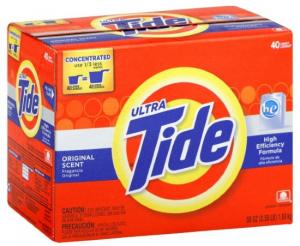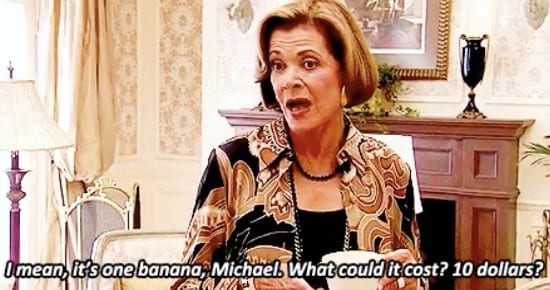With 14 million Americans looking for employment, former President Bill Clinton offers his suggestions for “14 ways to put America back to work.”
It’s a pretty good list. A few of these things were included in bits and patches and pieces in the original too-small Recovery Act but need to be done, as Clinton suggests, on a scale commensurate with the magnitude of the problem.
Clinton also includes one of my favorite ideas, one that Atrios has been beating the drum over for some time:
8. Paint ’em white
Look at the tar roofs covering millions of American buildings. They absorb huge amounts of heat when it’s hot. And they require more air conditioning to cool the rooms. Mayor Bloomberg started a program to hire and train young people to paint New York’s roofs white. A big percentage of the kids have been able to parlay this simple work into higher-skilled training programs or energy-related retrofit jobs. (And, believe it or not, painting the roof white can lower the electricity use by 20 percent on a hot day!)
Every black roof in New York should be white; every roof in Chicago should be white; every roof in Little Rock should be white. Every flat tar-surface roof anywhere! In most of these places you could recover the cost of the paint and the labor in a week. It’s the quickest, cheapest thing you can do. In the current environment it’s been difficult for the mayors to get what is otherwise a piddling amount of money to do it everywhere. Yet lowering the utility bill in every apartment house 10 to 20 percent frees cash that can be spent to increase economic growth.
You may recall I wrote about this same idea earlier this month in a post offering my list of half-joking desperate attempts to address the jobs crisis (I was calling it that when I was still employed, so I figure I’m still allowed to do so). Here’s what I wrote then:
3. Urban Rooftops
We’ll start this project in 30 major cities, selected on the basis of: 1) high unemployment, and 2) high average temperature.
Commercial buildings and residential buildings over a certain size threshhold will be given two choices for their roofs: Paint or plants? If they choose the former, then a team of our newly hired roof-painters will show up to paint their roof white. If they choose the latter, then a team of our newly hired roofscapers will show up to plant a rooftop garden.
After finishing every roof in those first 30 cities, the project will move north until we hit Bar Harbor or full employment, whichever comes first.
As Clinton points out, this doesn’t just benefit the people hired to do the painting. It also cuts waste. And the benefit of both of those will get multiplied. Smalltown, USA, gets a grant to hire six unemployed workers — six people who at the moment constitute an untapped and unproductive resource — and they get to work on Main Street. (Or, if you prefer, the small businesses on Main Street get a tax credit for hiring roof painters — either one, or both.) They’ll work up quite an appetite painting those roofs, and that will benefit the pizza shop and sub shop and Chinese place there on Main Street. Between that little bump in sales and the sudden decrease in their air conditioning expenses they may wind up able to hire some new people themselves, or maybe they’ll be able to buy more ads in the Smalltown Gazette — saving some jobs there too. And so on, and so on.
Brittany Hsu offered a good summary of the difference between white roofs and green roofs a while back for Mother Nature Network:
If you have read my last post on green roofs, white roofs are similar in terms of cooling urban environments and reducing energy consumption but offer different advantages and disadvantages. The idea for these roofs came from Steven Chu, the … U.S. Secretary of Energy. He claims that painting roofs white (as opposed to growing plants on green roofs), can help fight global warming because they reflect sunlight and can potentially reduce 44 billion tons of carbon dioxide. Mayor Bloomberg particularly likes these roofs because they not only reduce the need for air conditioning in buildings, but also create new jobs for young people. Whereas green roofs will require skilled labor for installation, white roofs can be painted by unskilled workers (particularly teenagers) and have an overall better return investment. As my colleague, a middle school teacher, pointed out, the benefits of white roofs are seen immediately. Green roofs are more expensive to install while white roofs simply require a couple of buckets of paint. Either way, energy bills will be reduced. Nevertheless, green roofs have critical long term and environmentally sound advantages in their ability to retain, detain and evaporate stormwater runoff and create biodiversity.
Either sort of rooftop, green or white, is immensely useful and fairly quickly pays for itself in energy savings. The white-roof business model is incredibly simple. All you’d need is paint, brushes and enough workers to get the job done. You could do that yourself. This is a business you could start tomorrow and have up and running by next week.
So why do Bill and I think the government needs to be involved at all? This isn’t like building bridges or highways or levees, it’s not an enormous multi-year, multi-billion dollar undertaking, so if it really makes as much economic sense as we’re saying, why don’t we just leave it up to the market and wait for rising energy costs to bring about a boom in the roof-painting business?
That could happen, eventually, some day, maybe. But with unemployment near 9 percent, the free market isn’t really in great shape just now. Aggregate demand has ground to a halt. Companies won’t start hiring in earnest or giving raises again until consumers stop pinching their pennies, and consumers won’t stop pinching their pennies until companies start hiring in earnest and giving raises again. That Catch-22 means that neither businesses nor consumers are willing or able (respectively) to start spending money again to get the economy moving from its current standstill.
And that standstill makes it a really bad time to be an entrepreneur with a paint roller.
Hence the need for the government to give things a push.
In the meantime, every business in America is losing out on 14 million customers, we’re all losing out on the untapped productivity of those 14 million people, and we’re wasting a ton of money and fuel air conditioning black-roofed buildings.












